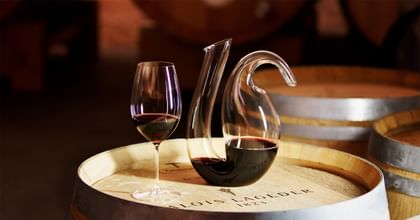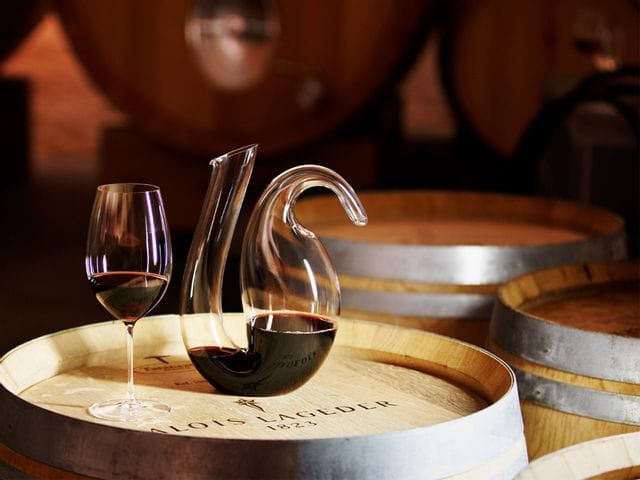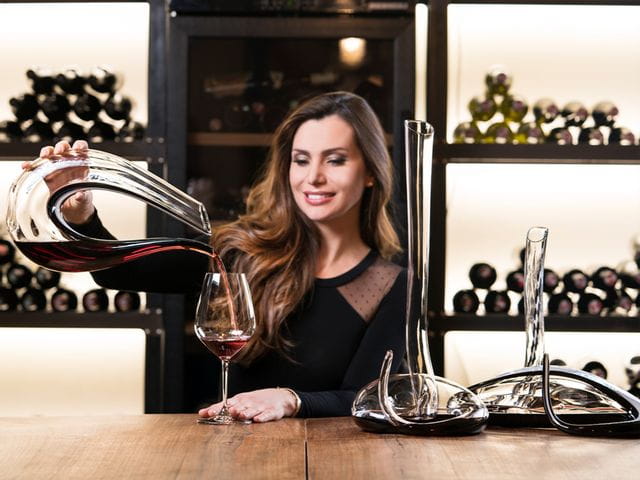from Blackberries to Leather
Celebrating Shiraz

Did you know that it is Shiraz Day on Thursday 28 July? Just don't confuse it with International Syrah Day, celebrated in February. Here are some facts about Shiraz and what distinguishes it from Syrah.

The last Thursday in July
Australia has been growing Shiraz for nearly 200 years, with the red wine variety sitting proudly in their top spot for most produced wine. However, the wine-loving country down under waited until 2020 to establish a formal #ShirazWineDay.
Shiraz Day centres around the fruit-forward New World style that Australia is known for, from regions like Barossa Valley and McLaren Vale. It's held in the middle of Australia's winter when a glass of Shiraz is just what will keep you warm on a chilly evening.
Key facts about Shiraz
- Shiraz was brought to Australia in 1831 by James Busby, sometimes referred to as "the Father of Australian viticulture". The original cuttings he made were believed to be from the Rhône region of France, where it is known as Syrah. By the 1860s, Shiraz was noted as an important grape in Australian winemaking.
- It took until the 1980s for winemakers to begin naming their wines using this varietal "Shiraz". This word is either derived from a misspelling of the French word "Syrah" or due to the grape's rumoured origins in Shiraz, Iran.
- Shiraz is now the most planted grape variety in Australia, most commonly known overseas for wines like Penfolds Grange, Henschke Hill of Grace, and Wendouree.
- When someone says "Australian Shiraz", do you automatically think of somewhere like the Barossa Valley? Nearly 75% of the grapes grown in the Barossa are Shiraz!
- South Africa is one of the only countries producing wine under this name. It is now the second most planted red grape after Cabernet Sauvignon in South Africa and the fourth largest grower in the world.
- Wineries from Australia and South Africa have now begun labelling their wines as either "Shiraz" or "Syrah", to help customers distinguish the style of wine they are producing.

The profile of shiraz
Though they are both made using the same grape, the main difference between "Syrah" and "Shiraz" is the style of wine.
The former refers to a more restrained, elegant red wine, typically known as the Old World style and often produced in a cooler climate, whereas the latter refers to a punchier, bolder wine.
This is known as the New World style, which is easier to achieve in a warmer climate. The fruit is riper when picked, resulting in more fruit-forward flavours and higher alcohol content.
Typically characteristics of Shiraz include blackberry, plum, or dark chocolate, supported by savoury characters like white pepper, leather, mushrooms, or earth.
With a thick-skinned grape, young iterations of this wine can be very tannic. As a result, this variety benefits from being served at the right temperature (16C / 61F) and being vigorously decanted when young. These thick skins also mean it's an excellent wine for cellaring!

The ideal glass shape for shiraz
Did you know? The Shiraz shapes are our portfolio's most versatile red wine glasses, suitable for the broadest range of varietals.
RIEDEL offers two key shapes for Shiraz drinkers:
- Hermitage or Old World Syrah: This glass has an accentuated egg-shaped bowl that elevates the soft fruit and earthy characters and offers a long, savoury finish. It brings out the wine's silky, velvety structure and elegantly balanced flavours.
- Shiraz or New World Shiraz: The Shiraz glass is perfect for balancing the gripping tannins and concentrated fruit typical of medium-bodied red wines. The shape develops intense aromas and creates harmony between mouth-filling fruit and its powerhouse structure.
Browse our shiraz glasses below
Locations